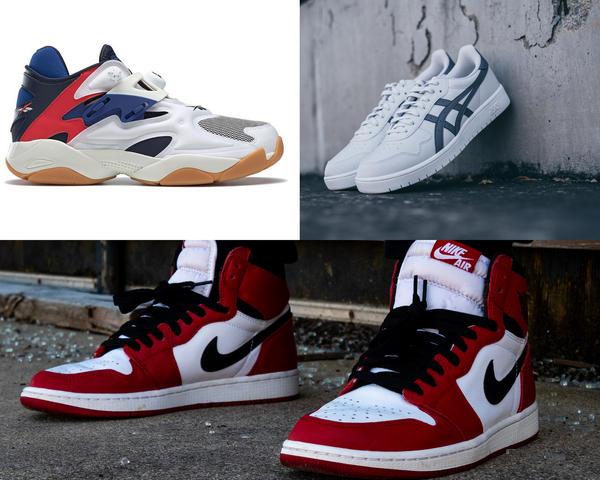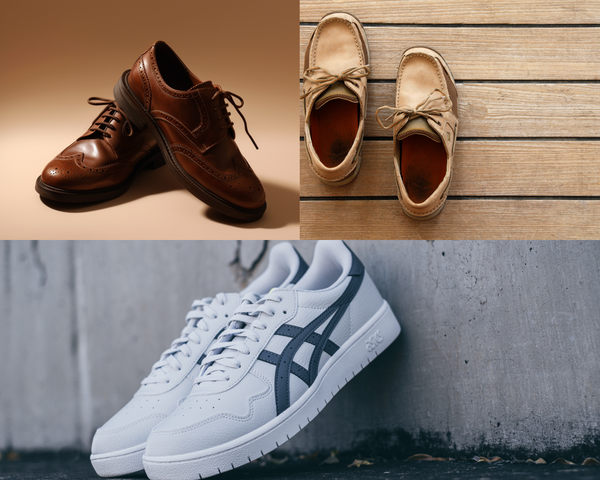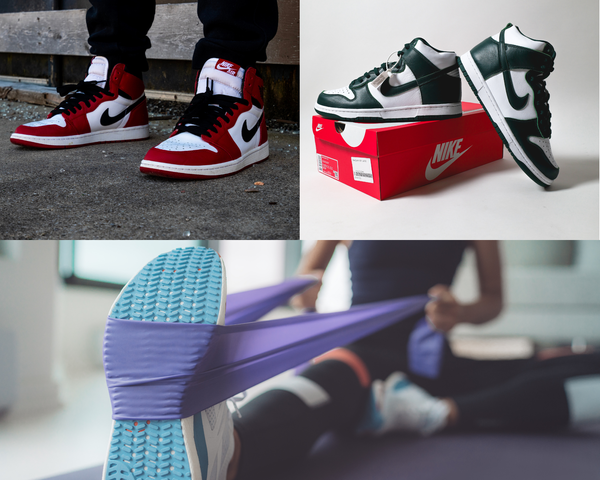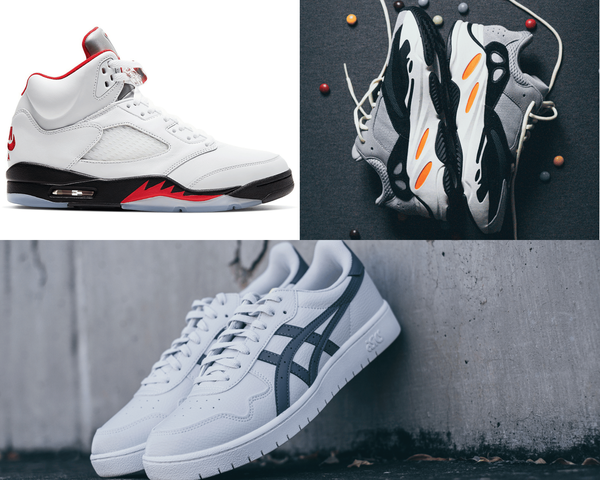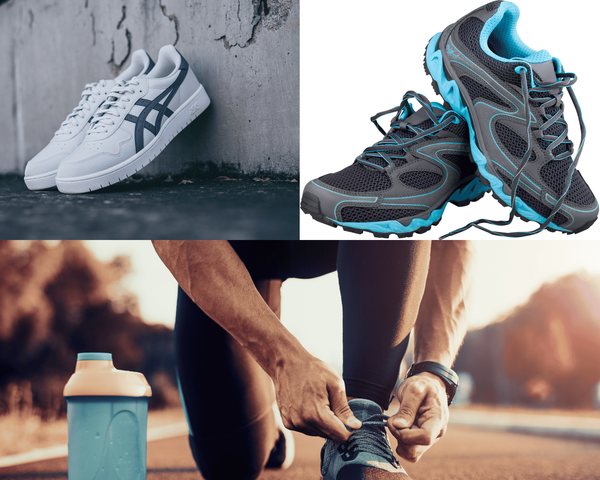Dealing with posterior tibial tendonitis can feel like walking on eggshells. Tibial tendonitis is often exacerbated by excessive pronation. The right footwear can make a world of difference, transforming your daily strolls from a painful ordeal into a comfortable experience. In this guide, we’ll explore the best shoe options and accessories to support your foot health and alleviate tendonitis pain.
Key Takeaways:
- Maximize your shoe's support with inserts designed for tendonitis relief.
- Explore top choices that fit seamlessly and support foot health.
- Discover braces that provide stability and support for tendonitis sufferers.
Understanding Posterior Tibial Tendonitis
Posterior tibial tendonitis is a condition that affects the tendon connecting your calf muscles to the bones on the inside of your foot. This tendon plays a crucial role in supporting the arch of your foot and stabilizing your ankle. When it becomes inflamed or torn, it can lead to pain and difficulty walking. The navicular bone also plays a significant role in foot mechanics, and issues with this bone can exacerbate the condition.
The first step in managing this condition is understanding its impact on your daily life. Imagine trying to balance on a tightrope with a frayed rope; that’s what your foot experiences without proper support. The right shoes and inserts can provide the necessary stability, much like a safety net for your feet. Ankle rolls are a common symptom that can indicate instability and the need for better support.
Causes and Symptoms
Posterior tibial tendonitis is a common condition that affects the posterior tibial tendon, which runs from the calf muscles to the bones on the inner side of the ankle. This condition often arises due to a combination of age and lifestyle factors. For instance, being overweight can place extra strain on the tendon, while having flat feet can lead to improper foot mechanics that exacerbate the issue. Additionally, wearing unsuitable footwear that lacks proper support can contribute to the development of posterior tibial tendonitis. Interestingly, women, particularly those in middle age, are more prone to this condition.
Recognizing the symptoms of posterior tibial tendonitis is crucial for early intervention. Common signs include pain or discomfort on the inside of the ankle and foot, which may be accompanied by tenderness and swelling. This pain can range from a dull ache to a sharp, intense sensation, and is often aggravated by activities such as standing, walking, or running. Difficulty walking and a noticeable change in foot shape or arch height can also indicate the presence of this condition. By understanding these symptoms, individuals can seek appropriate treatment and prevent further complications.
Stages of Posterior Tibial Tendonitis
Posterior tibial tendonitis progresses through four distinct stages, each characterized by varying degrees of pain, swelling, and deformity. Understanding these stages can help individuals and healthcare providers tailor treatment plans effectively.
- Stage I: At this initial stage, individuals experience mild pain and swelling on the inner side of the ankle. There is no visible deformity, and the condition is often manageable with conservative treatments such as rest, ice, and physical therapy.
- Stage II: As the condition progresses, pain and swelling become more pronounced. A flexible deformity may develop, where the arch of the foot begins to flatten but can still be corrected manually. Supportive footwear and orthotic devices are crucial at this stage to prevent further deterioration.
- Stage III: In this stage, the pain and swelling are severe, and the deformity becomes rigid. The arch of the foot is significantly flattened and cannot be corrected manually. More intensive treatments, including bracing and physical therapy, are often required to manage symptoms and maintain mobility.
- Stage IV: The most advanced stage is characterized by a tilted ankle bone and a collapsed medial arch. The deformity is rigid, and the pain is often debilitating. Surgical treatment may be necessary to correct the deformity and restore function.
Best Shoe Inserts for Tendonitis Relief
When it comes to finding relief, shoe inserts are a game-changer. They offer additional support and cushioning, reducing strain on the posterior tibial tendon and supporting the foot arch. The best shoe inserts for tendonitis relief are designed to cradle your foot, providing comfort and stability.
Consider inserts that offer arch support and heel cushioning. These features help distribute pressure evenly across your foot, minimizing stress on the tendon. Using shoe inserts can also help control pronation, which is beneficial for overall foot health. Brands like Superfeet and Dr. Scholl’s offer top inserts for tendonitis shoe support, ensuring you can walk with ease and confidence.
Best Shoes for Posterior Tibial Tendonitis
Choosing the right footwear is essential for managing posterior tibial tendonitis. The best shoes for this condition provide excellent arch support, alignment correction, and shock absorption. These features help to reduce stress on the posterior tibial tendon and promote proper foot mechanics.
When selecting shoes, look for those with a stiff sole and a high heel drop (10-12 mm). These characteristics help to distribute pressure more evenly across the foot and reduce strain on the tendon. Some highly recommended shoes for posterior tibial tendonitis include the Brooks Adrenaline GTS 23, Asics GEL-KAYANO 31, posterior tibial tendonitis treatment and Hoka Gaviota 5. These models are known for their superior support and cushioning, making them ideal for individuals with this condition.
Heel Pads and Foot Braces: Effective Solutions
Heel pads for tendonitis pain are another effective solution. These pads provide extra cushioning to the heel, reducing impact and alleviating discomfort. They are particularly beneficial for those who spend long hours on their feet, offering a soft landing with every step. Using heel pads can also help relieve pain associated with tendonitis.
Foot braces for tendonitis relief are also worth considering. These braces provide stability and support, much like a sturdy bridge over troubled waters. An ankle brace helps maintain proper foot alignment, reducing the risk of further injury. Look for options that are adjustable and breathable, ensuring comfort throughout the day.
Shoe Stretching Techniques for Comfort
Sometimes, even the best shoes need a little adjustment to provide optimal comfort. Shoe stretching techniques can help alleviate symptoms of posterior tibial tendonitis by ensuring a better fit and reducing pressure points.
One effective method is to use a shoe stretcher, which can be purchased at most shoe stores or online. This tool allows you to gradually expand the shoe to accommodate your foot’s shape. Another technique involves using a hair dryer to heat the shoe material, posterior tibialis tendon making it more pliable. Once the material is warm, posterior tibial tendinopathy, you can use a shoe stretcher or your hands to gently stretch the shoe. This approach is particularly useful for individuals with bunions or wide feet, as it provides a customized fit that reduces pain and discomfort.
Gel Inserts and Foot Sleeves for Added Comfort
For those seeking additional comfort and support, gel inserts and foot sleeves can be invaluable. Gel inserts provide an extra layer of cushioning, absorbing shock and reducing pressure on the posterior tibial tendon. They are ideal for individuals who spend long hours on their feet or engage in high-impact activities. Brands like Spenco and PowerStep offer some of the best gel inserts for tendonitis relief, ensuring a smooth and comfortable experience with every step.
Foot sleeves, on the other hand, offer compression and stability, much like a gentle hug for your foot. These sleeves help to reduce swelling, posterior tibial tendonitis taping improve circulation, and provide support to the affected area. They can be worn throughout the day or during specific activities to promote faster recovery and alleviate pain. By incorporating gel inserts and foot sleeves into your footwear routine, ankle joint, foot and ankle surgeon, you can enhance comfort and support, achilles tendon, making it easier to manage posterior tibial tendonitis.
Shoe Stretching Techniques for Comfort posterior tibial tendon dysfunction
Sometimes, the perfect shoe just needs a little tweaking. Shoe stretching for tendonitis can enhance comfort by relieving tightness and pressure points. This process involves gently expanding the shoe to better accommodate your foot’s shape, much like tailoring a suit for the perfect fit.
To stretch your shoes, you can use a shoe stretcher or try DIY methods like using a hairdryer to warm the shoe material, then wearing thick socks to stretch them. This technique can be particularly helpful for those with bunions or wide feet, tibialis posterior tendon, providing a custom fit that reduces pain and discomfort.
Gel Inserts and Foot Sleeves for Added Comfort tibialis posterior muscle
Gel inserts for tendonitis relief offer an extra layer of cushioning, absorbing shock and reducing pressure on the tendon, which can help alleviate foot pain. These inserts are ideal for those seeking a plush, comfortable feel in their shoes. Brands like Sof Sole and Powerstep provide some of the best gel inserts for tendonitis comfort, ensuring a smooth ride with every step.
In addition to gel inserts, wearing supportive shoes can further enhance comfort and support.
Foot sleeves for tendonitis pain are another option to consider. These sleeves provide compression and support, much like a gentle hug for your foot. They help reduce swelling and improve circulation, promoting faster recovery and pain relief.
Summary
Finding the best shoe for posterior tibial tendonitis involves more than just picking a stylish pair. It requires a thoughtful approach to foot care, incorporating supportive inserts, heel pads, and braces to alleviate pain and enhance comfort. By exploring these options, you can take confident strides towards a pain-free life.
FAQ
Q1: What are the best shoe inserts for tendonitis relief?
A1: The best shoe inserts for tendonitis relief are those that offer arch support and heel cushioning. Brands like Superfeet and Dr. Scholl’s provide top inserts that help distribute pressure evenly and reduce strain on the tendon.
Q2: How can I stretch my shoes for tendonitis comfort?
A2: To stretch your shoes, use a shoe stretcher or try warming the shoe material with a hairdryer, then wear thick socks to gently expand them. This helps relieve tightness and provides a custom fit.
Q3: Are gel inserts effective for tendonitis pain?
A3: Yes, gel inserts are effective for tendonitis pain as they offer extra cushioning and shock absorption. Brands like Sof Sole and Powerstep provide some of the best gel inserts for added comfort and support.





